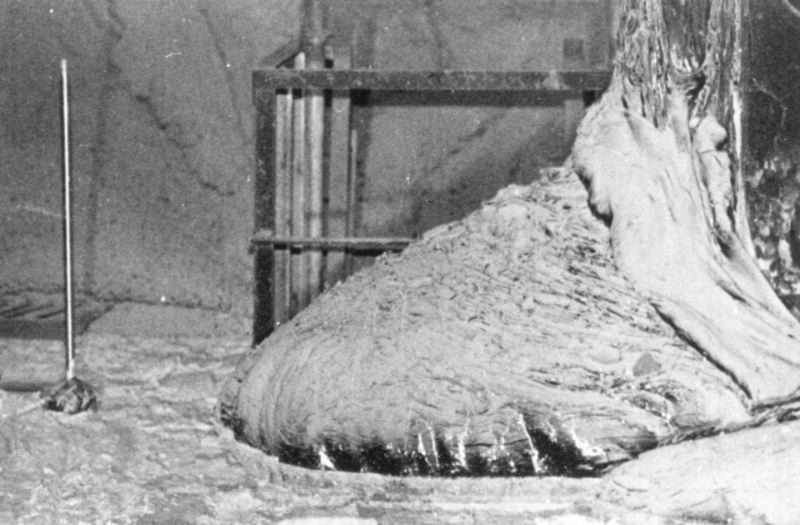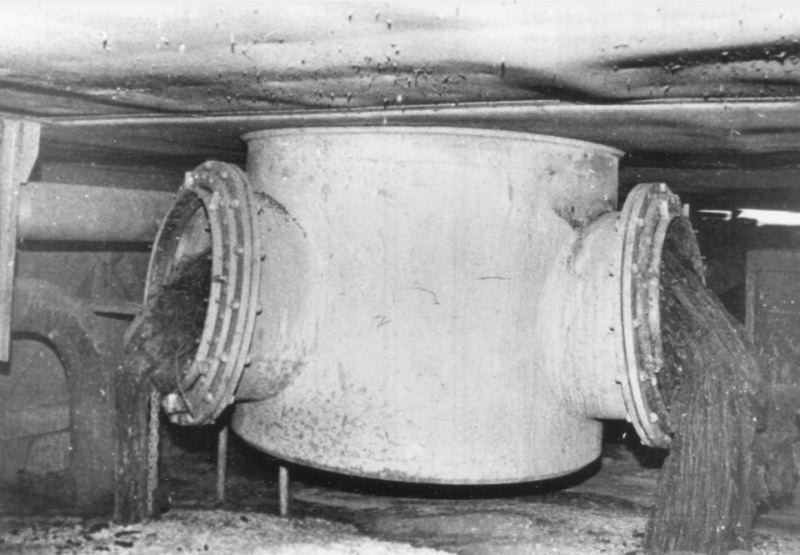Here is a
simplified explanation of the situation:
Here’s the background on nuclear power plants: Nuclear power plants are composed of a fuel assembly, a containment vessel, a cooling assembly and a power assembly.
The fuel assembly is contained within the containment vessel. The fuel is “nuclear” (Uranium, plutonium) This fuel is shaped into pellets (cylindrical shape) that are encased in metal, forming “rods”. The rods are assembled and placed in proximity to each other to create heat. There is a coolant mechanism within the containment vessel that is connected to a heat exchanger outside the containment vessel. The heat exchanger absorbs some (most) of the heat from the inside coolant mechanism. The heat exchanger then uses the superheated fluid to make steam that turns steam turbines that make electricity.
The containment vessel, a very thick “kettle” keeps the nuclear material and radiation from escaping to the outside. The whole system is dependent on each of the components working. The earthquake and tsunami damaged the mechanisms outside the containment vessel. The “outside” mechanism failed to keep the “inside” mechanism cool. The inside coolant overheated and had to be vented from its piping into the containment vessel. This created high pressure inside the containment vessel. The operators then had to vent off some of the pressure to the outside air. The venting allowed hydrogen gas to contact outside air and water. There were explosions when the hydrogen and oxygen in the air ignited. This blew apart the building that housed the containment vessel. These were the explosions that were on the news.
Due to the fact that the outside pumps were damaged or there was no power, the cooling system failed. The “evaporation” of the cooling fluid inside the containment vessel dropped the level of coolant below the tops of the fuel rods, causing the rods to overheat. This melted the metal casing of some of the fuel rods and the uranium. This is a partial melt down. The containment vessel has not (yet) been breached. –and may not be breached.
There is, however, the possibility that this might happen. If that happens, radioactive fuel (uranium) would be released to the outside (it first would melt into a molten blob of metal at the bottom of the containment vessel. The metal would eventually melt through the bottom and be released to burn its way into the ground. If it did this, it would be a matter of time until it hit ground water. The ground water would then be made into radioactive steam that would shoot explosively into the atmosphere. The steam cloud would then drift with the wind –probably towards North America.
Right now, the operators are pumping sea water and boron into the pool of water in the containment vessel in an effort to keep the reactor from melting any further. By pumping sea water in, they are forced to allow some steam of gasses (hydrogen) to be released into the atmosphere. (Picture a pressure cooker on your stove. The pressure cooker can hold some pressure but not all the pressure that can be generated. It’s a very bad situation but they are doing everything they can to prevent a meltdown. Unfortunately, there a bunch of reactors with varying levels of the problem.
Hope this helps.
There is, however, the possibility that this might happen. If that happens, radioactive fuel (uranium) would be released to the outside (it first would melt into a molten blob of metal at the bottom of the containment vessel. The metal would eventually melt through the bottom and be released to burn its way into the ground. If it did this, it would be a matter of time until it hit ground water. The ground water would then be made into radioactive steam that would shoot explosively into the atmosphere. The steam cloud would then drift with the wind –probably towards North America.Bullshit. And that's as politely as I can put it.
Chernobyl was an absolute worst-case scenario with an uncontained nuclear reactor melting down, and the melted core flowed across the concrete in the basement, not down into the earth.

That blob there, photographed by a remote-operated camera, is melted corium - nuclear fuel mixed with other core materials. If you were standing right there you'd die an horrible but quick death from the heat and radiation.
And look at this - the melted core couldn't even melt this steel steam pipe, let alone the bedrock:

It just flowed out the pipe onto the floor.
The melted core is only generating enough heat to melt itself, not enough to melt much of what's around it. And the containment is designed so that a melted core does not collect into a blob and go critical to generate more heat, but rather to spread out and dissipate it to keep it from going super-critical.
Repeat after me: "The China Syndrome was just a movie. The China Syndrome was just a movie."

